Cooking our way to staying healthy
As we continue staying at home for long periods of time, it may be a good time to rethink our weight loss goals.
As a specialist dietitian, one of my major concerns during this time is patients regaining the weight that they have managed to lose over the last year. However, there are a few positives of the lockdown situation, like enjoying flavoursome home-cooked meals.
We just need to ensure that we incorporate a healthy eating routine and manage our blood sugar levels especially for people living with type 2 diabetes or those at risk of type 2 diabetes (defined as non-diabetic hyperglycaemia).
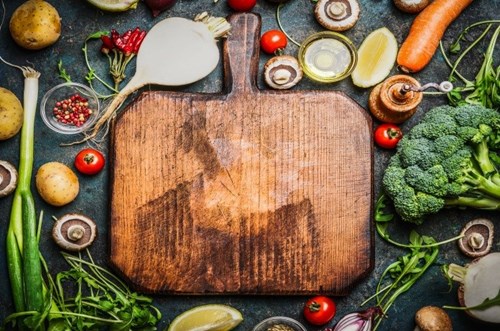
When in lockdown, cook at home
What better way to spend your time indoors than to try new culinary skills with real foods. Head to your kitchen and get your apron on, as you are about to discover some great, easy, tips and tricks to step up your healthy lifestyle and walk out of this pandemic with healthier blood sugar levels.
Not only does cooking help curb the carbs, but it’s also a great stress buster, which I’ll also explain.
1. The power of protein
By eating more protein and fewer carbs, you reduce your hunger hormones and boost several satiety hormones. This can help you to lose weight. Include some form of protein at mealtimes (portion around the size of your palm) such as:
Meats: chicken, turkey, lean beef, pork.
Fresh or tinned fish: including mackerel, salmon – these are easy foods to add in salads.
Eggs: learn the art of the perfect poached egg or have a boiled egg as a snack.
Dairy: milk, cheese and yoghurt (the latter can be eaten with berries and walnuts).
Legumes: a vegan and vegetarian source of protein, which includes kidney beans, chickpeas, lentils and are great protein replacements in curries and stews. These are available in tins for easy cooking and a great way to enhance salads.
Have a look at some of our great ideas on easy-to-prepare meals at home. You can also get some inspiration for some real food flavours and fresh recipe ideas-
PaleoPlan’s 450+ easy and delicious Paleo recipes—all absolutely free!
My New Roots recipes in the main categories; Breakfast, Lunch, Main Dish, Salad and Raw Food.
2. Fill up on Fibre
Foods rich in fibre can help you to feel fuller for longer, staving off hunger pangs that might lead to snacking on foods that cause high blood sugar spikes. So why not swap everyday carbohydrates to high fibre foods, such as a handful of walnuts to help balance your blood sugar level and ensure you get all the essential nutrients from these foods?
You can start by increasing the variety of vegetables, such as swapping rice with cauliflower rice, or swapping potatoes with carrot fries or using a fibre flour (if you’re a baker!) or just simply to make rotis (Indian flatbreads made with wholemeal or wheat flour).
Eat more salads and leafy green vegetables at mealtimes. Other foods containing high levels of soluble fibre include dried beans, nuts, seeds oat bran, bran, barley, citrus fruits, apples and strawberries.
Some key vegetables that can help us gain all the essential micronutrients to boost our immunity include button mushrooms, ginger, spinach and broccoli. So pop them into your trolley or online basket next time you do your food shop!
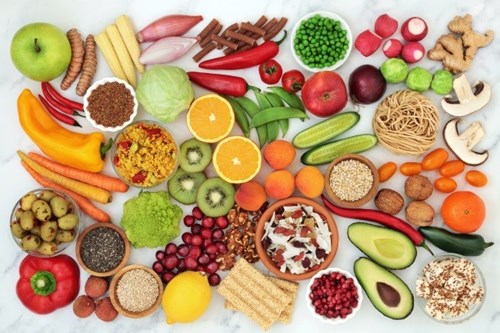
Wholegrain is much better than refined flour but is still high glycaemic carbohydrates which means that they are absorbed more quickly and should be used sparingly if you are trying to lose weight. Oat bran and oat germ are an inexpensive alternative, as are wheat bran and wheat germ.
3. Reduce sugar intake
Staying at home for many hours can lead to boredom and excessive snacking. It’s best to avoid the obvious sugary foods including cakes, biscuits, chocolates or adding honey and maple syrup to foods. Use low-calorie sugar substitutes such as Stevia, as it is great for baking and cooking too
Eat clean, eat fresh and keep healthy
Avoid all juices, even orange juice, eating the fruit instead is much better. Also avoid fizzy drinks, energy drinks, tropical juices, cranberry juice, etc. unless this is part of your treatment for low blood sugar. Add some natural yoghurt to a handful of berries and nuts to make a refreshing dessert or why not try a guilt-free chocolate mousse made with avocados, walnuts and cocoa powder.
For more guilt-free desserts visit the Diet Doctor website.
4. Emotional wellbeing
Not seeing our friends and family can take a toll on our mental health. It is, therefore, important that we try to take care of our mental well-being. Annabelle Carter Short, in her blog, talks about how cooking and the aroma from ingredients (called aromatherapy) can relieve stress.
Studies show that people who take their time to get involved in small creative projects tend to feel happier themselves and look forward to the next day. Let cooking be that project for you: a creative (healthy) project from which you can feel a sense of accomplishment.
It can get quite lonely for those at home alone and cooking for one. But there are online forums that you can join to take part in food and cooking discussions. Diabetes UK has a great forum with lots of people from the UK and beyond sharing ideas.
5. Check your portion size
Be mindful about your carbohydrate intake and the portion size. Foods such as rice, rotis, potatoes, all have high carbohydrate content and a high glycaemic index (HGI). This means that they can raise your blood glucose levels very quickly. (1). So try not to eat too many HGI foods. Refer to the World Foods book from Carbs & Cals which shows, visually, the equivalent of sugar per portion of food and drink. It even includes specific dishes from the African, Middle Eastern, Caribbean and South Asian cuisines (2). You should check it out if you haven’t yet!
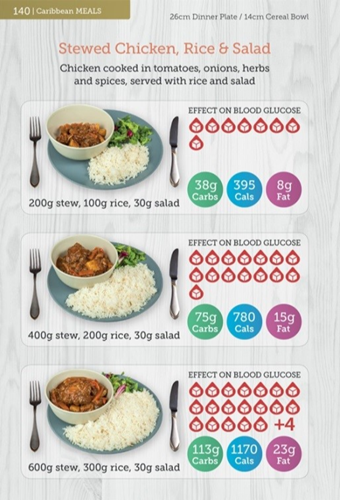
This is a page from the World Foods book. Notice how the blood sugar icons are displayed beside each portion size in addition to other nutritional values.
6. Stay hydrated
Drinking enough fluids is essential in order to feel and function at our best. We need around 8 glasses of fluid throughout the day. This can be achieved through drinking plenty of water and also tea, coffee and milk, However, it is advised to keep caffeinated drinks to a minimum.
7. Growing your own food
If you enjoy gardening, start growing fruits and vegetables in your backyard or on your balcony. Of course, we need to buy processed foods from the supermarket sometimes, but freshly grown fruit and veg is something to really enjoy and cherish.
An article from the Harvard Health Letter explains why backyard gardening is more nutritious compared to store-bought food (5). A recent study also suggests that home gardening has significant health improvements in managing long term conditions. (6).
In addition to providing healthier food, the physical activity you get from gardening helps cope with stress. Some of the common homegrown foods include green beans, tomatoes, mint, spinach and green chillies.
If you’re new to this, horticulturist David Domoney recommends growing these fruits and veggies to make gardening simpler: tomatoes, beetroot, strawberries, chillies, blueberries and raspberries (7). As the lockdown eases, garden centres will open, where you can pick up many grow your own food plants.
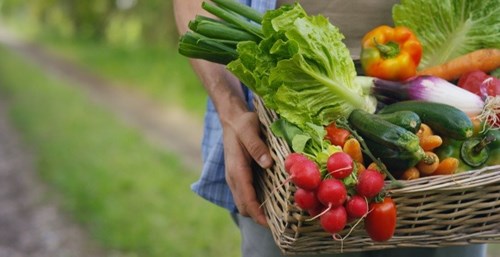
8. Mindful eating
During quarantine, we might find ourselves eating out of habit or as a result of feeling bored or frustrated. Food provides some relief and pleasure. Although emotional eating can be seen as a sign of weakness, it is in fact a coping mechanism.
Practising mindfulness can help you differentiate between your thirst and hunger, eating healthily regularly when hungry, rather than eating for comfort. Why not start by trying one meal with high protein and see how you feel afterwards? Plan it in advance so that you have time to adjust your emotions and thought processes.
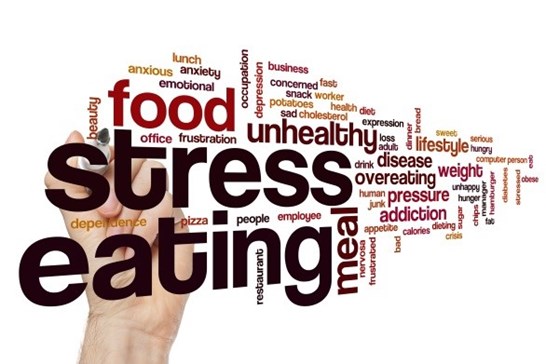
Enjoy your meals by eating without the TV on, without reading a newspaper or talking on the phone at the same time - and eating slowly & concentrating on texture & taste.
Enjoy your meals, taste it, smell it, and don’t rush it.
Our physical health has a big impact on how we feel. At times like these, it can be easy to fall into unhealthy patterns of behaviour that end up making us feel worse. Try to avoid smoking or drugs, and try not to drink too much alcohol.
Set yourself small but realistic targets. There are plenty of online Cognitive Behavioural Therapy (CBT) support services that could support you through these changes.
For further reading on Mindful Eating -
The 'Overcoming’ series is good, Dr Christopher Fairburn on binge eating;
Freedom from Addiction by Joe Griffin & Ivan Tyrrell;
Dr Jen Nash’s F-A-T It's not just Food and Treadmills, its Feelings and Thoughts.
References
- Diabetes UK. What is a healthy, balanced diet for diabetes? [Internet]. [cited 2020 Apr 10]. Available from: https://www.diabetes.org.uk/guide-to-diabetes/enjoy-food/eating-with-diabetes/what-is-a-healthy-balanced-diet
- Mehar S, John JS, Cheyette C, Balolia Y. World Foods Book - Carbs & Cals [Internet]. Chello Publishing Limited; 2019 [cited 2020 Apr 10]. Available from: https://www.carbsandcals.com/books/world-foods
- World Health Organisation (WHO). Mental health and psychosocial considerations during the COVID-19 outbreak [Internet]. 2020 Mar [cited 2020 Apr 10]. Available from: https://www.who.int/docs/default-source/coronaviruse/mental-health-considerations.pdf
- Short AC. 7 Reasons Why Cooking Is the Ultimate Stress Reliever [Internet]. thrivglobal.com. 2019 [cited 2020 Apr 10]. Available from: https://thriveglobal.com/stories/7-reasons-why-cooking-is-the-ultimate-stress-reliever/
- Godman H. Backyard gardening: grow your own food, improve your health. Harvard Health Publishing [Internet]. 2012 [cited 2020 Apr 10]; Available from: https://www.health.harvard.edu/blog/backyard-gardening-grow-your-own-food-improve-your-health-201206294984
- Palar K, Lemus Hufstedler E, Hernandez K, Chang A, Ferguson L, Lozano R, et al. Nutrition and Health Improvements After Participation in an Urban Home Garden Program. J Nutr Educ Behav. 2019 Oct 1;51(9):1037–46.
- Domoney D. Beginner’s Guide to Growing Fruit and Veg [Internet]. [cited 2020 Apr 10]. Available from: https://www.daviddomoney.com/beginners-guide-to-growing-fruit-and-veg/




